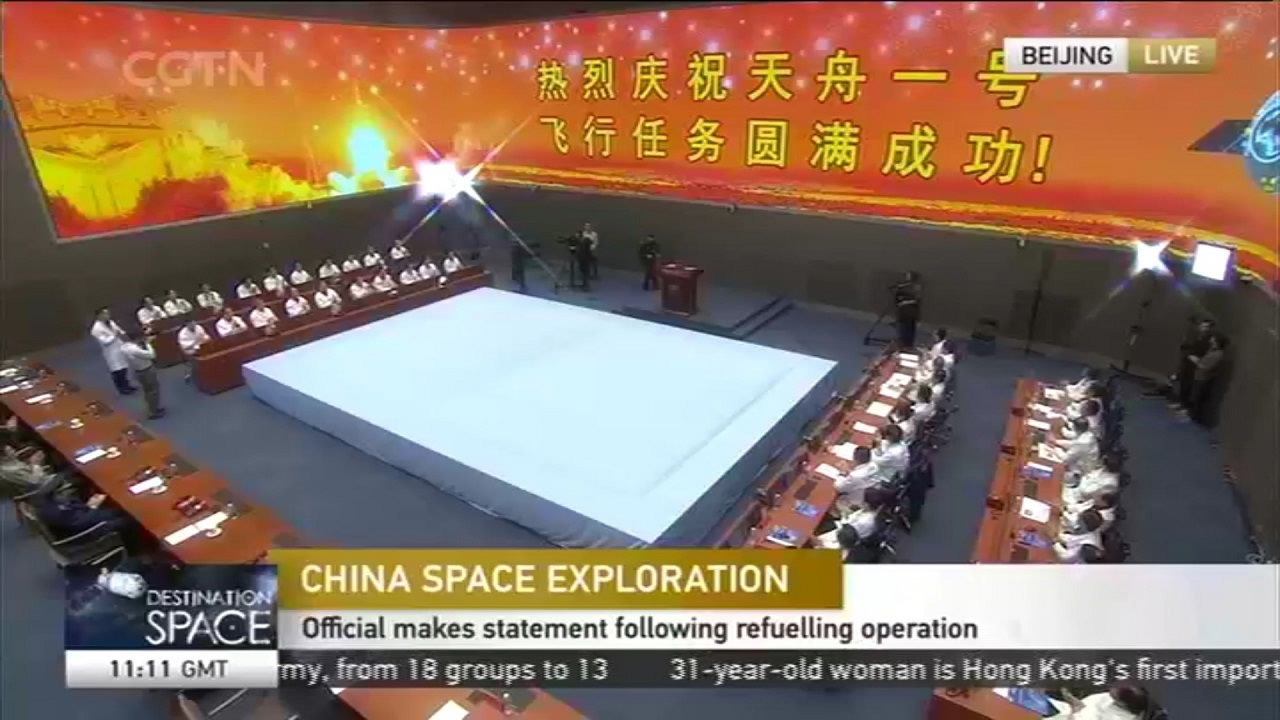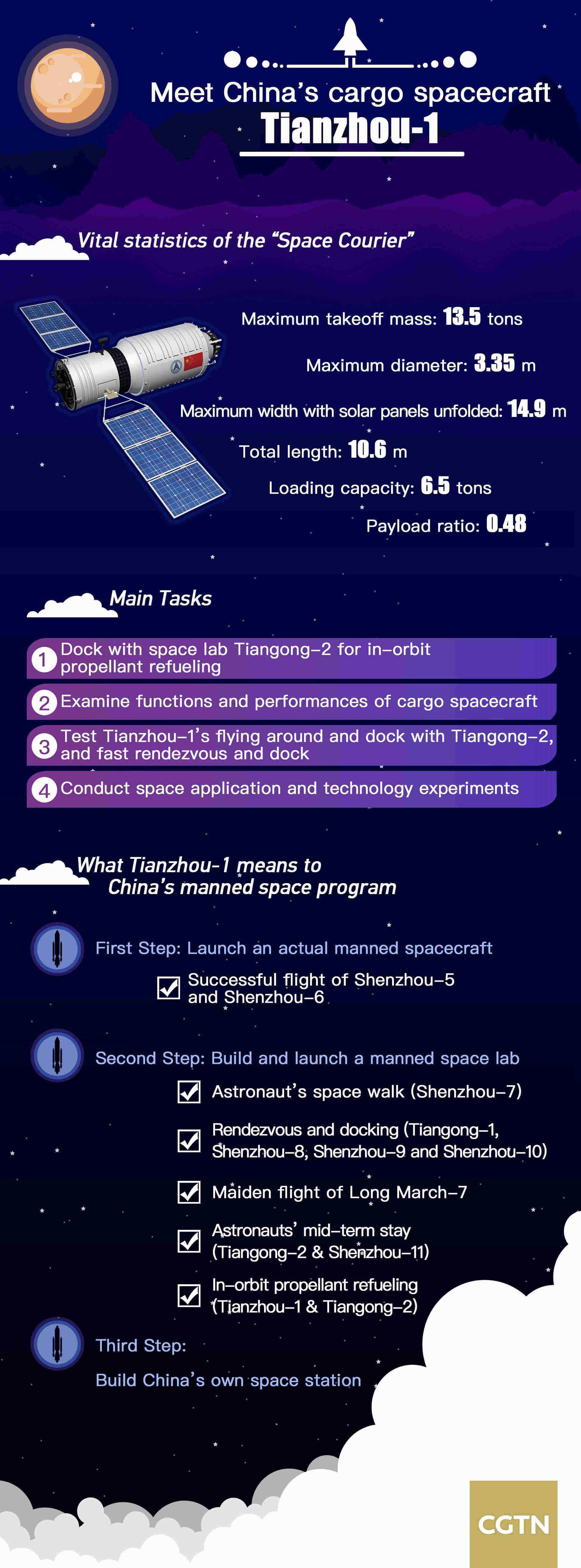China on Thursday successfully refueled its Tiangong-2 space lab in orbit, proving it has mastered the last crucial piece of technology to fulfill the country's space station ambition.
The mission's chief commander, Zhang Youxia, announced the success of the test at 7:10 p.m. BJT (1110 GMT) in the mission's Beijing command center after a five-day process.
The Tianzhou-1 mission, China's first cargo spacecraft, “has far-reaching significance for the space dream that we've been chasing," said the congratulatory message by the Chinese leadership.

Zhang Youxia announces the success of the test. /CGTN Photo
Critical success
Chinese engineers consider the refueling a major breakthrough for future space station operations, as on-orbit liquid propellant transfer is critical to ensure a sustainable fuel supply for spacecraft.
China's space program has a three-step plan to build its own space station, like the International Space Station (ISS) currently orbiting the earth, by 2022.
Thursday's refueling marks the successful completion of step two, meaning China now has all the technology needed to set up a space station. The only thing left is to actually build one.
With the ISS due to retire in 2020, China's space station looks set to be the only one in orbit by the time it launches.

CGTN Graphic
Major challenges during docking
The Tianzhou-1 is using lithium-ion batteries in space for the first time. Chen Qizhong, deputy chief designer of the cargo ship system, told CGTN that officials have to be prepared for emergencies.
"The power sub-system is one of the most important components in a spacecraft. It is equivalent to a power station on earth providing electricity for every piece of equipment. It is like our heart," Chen said.
Refueling is also a tricky process, requiring great precision, he noted.
"After the docking process, the propellant tube and coupling part should be perfectly matched, with a margin of error less than one millimeter. It's not easy to control a huge system, but through intensive design and control technology, we will make it," he said.
A brief review of the Tianzhou-1 mission. /CGTN Video
Related stories:









